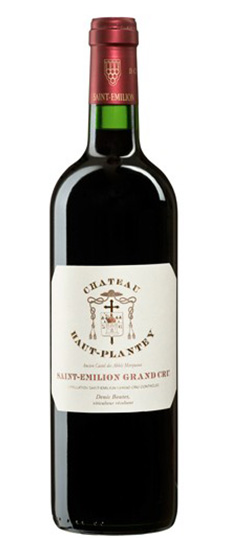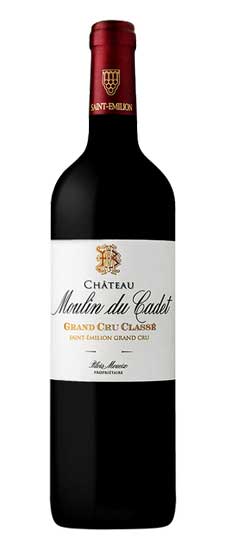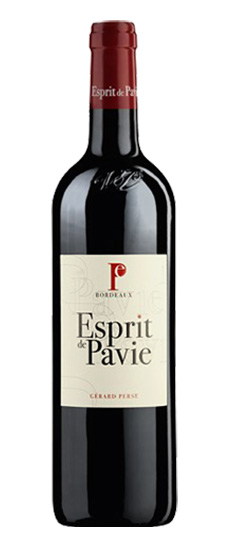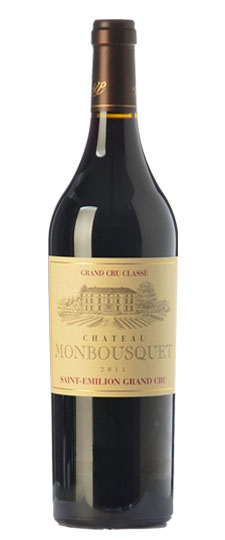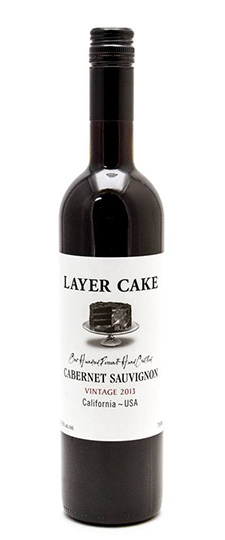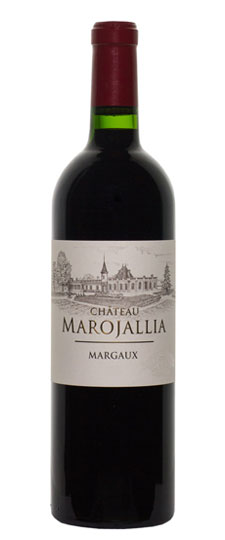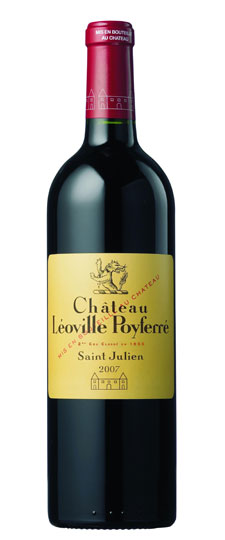Wine Score
Jeannie Cho Lee
Lively nose of fresh red currant and cherries with round, ripe tannins. Very approachable now – supple and juicy with moderate length. Tasted in: Bordeaux, France. Maturity: Drink.
Tasted: 09-Apr-2013
Jancis Robinson
When to drink: 2015 to 2021
70% Merlot, 30% Cabernet Franc. Lively and bright on the nose but a bit lean on the palate. Dryish finish. Julia Harding MW
Tasted: 01-Apr-2013
Grape Variety
Bordeaux Blend Red Wine
A Bordeaux Blend, at its most basic, is any combination of those grape varieties typically used to make the red wines of Bordeaux. The phrase, which seems to have originated with British wine merchants in the 19th Century, relates as much to wines made from the blend as to the grape variety combination itself (© Copyright material, Wine-Searcher.com). Far from being an officially defined or legal term, it is almost never used for wine-labeling purposes (although it occasionally appears on back labels). Its equivalent in the United States is Meritage, which is not only legally defined, but also a registered trademark.
Red Bordeaux Blends are known for their powerful structure and deep flavors. Dark fruits and berries such as plum and blackcurrant are commonly used to describe the flavors of red Bordeaux, although there is an unlimited range of terms that have been ascribed to them. Tannins tend to be relatively high in these wines, giving them a firm structure.
 Cabernet Sauvignon is widely accepted as a compulsory component of any Bordeaux Blend, with Merlot following close behind. In fact, the majority of Bordeaux Blend wines are often made exclusively from a blend of these two varieties. The remaining components are Cabernet Franc, Petit Verdot and Malbec, used in varying combinations and proportions. Even Carmenere is on the list of possible ingredients, despite being rarely used by modern Bordeaux vineyards (notable exceptions include Haut-Bailly, Brane-Cantenac and Clerc-Milon).
Cabernet Sauvignon is widely accepted as a compulsory component of any Bordeaux Blend, with Merlot following close behind. In fact, the majority of Bordeaux Blend wines are often made exclusively from a blend of these two varieties. The remaining components are Cabernet Franc, Petit Verdot and Malbec, used in varying combinations and proportions. Even Carmenere is on the list of possible ingredients, despite being rarely used by modern Bordeaux vineyards (notable exceptions include Haut-Bailly, Brane-Cantenac and Clerc-Milon).
With the global wine industry expanding and developing at pace, the use of the term “Bordeaux Blend” is changing. Although a product of the Old World, it remains a useful concept, allowing the wine industry and enthusiasts everywhere to talk about Bordeaux-style red wines as an international group, irrespective of regionality.
Flexibility and a useful vagueness are key assets of the term “Bordeaux Blend”, but are also its Achilles’ heel; if it becomes too broad or too widely used it will lose its meaning. Is a Bordeaux Blend still a Bordeaux Blend if it contains Zinfandel, Sangiovese or Syrah? Without a formal definition to go by, the answer to that question lies entirely in the collective consciousness of those who use the phrase. Provided that Bordeaux’s vignerons don’t discover a new grape variety (Cabernet Sauvignon is only a few hundred years old), the term’s definition remains relatively clear.
The red Bordeaux style has reached almost every winegrowing country, with new candidates looking to emulate Bordeaux’s success. North and South America, Australia, South Africa and New Zealand all have their own expressions of the Bordeaux Blend. Even countries in North Africa and the Middle East produce their own interpretations of the style.
For more information on the various permutations of the Bordeaux Blend, please see Cabernet Sauvignon – Merlot, Cabernet Franc – Cabernet Sauvignon or Cabernet Franc – Merlot.
Food matches for Bordeaux Blend wines include:
- Steak entrecôte marchand de vin (red-wine sauce and shallots)
- Grass-fed wagyu rib-eye fillet
- Roast leg of lamb with rosemary and garlic
Region
Bordeaux Wine
Bordeaux, in the southwest of France, needs little introduction as one of the world’s most famous, prestigious and prolific wine regions. Its three trump cards are diversity, quality and quantity.
The majority of Bordeaux wines (nearly 90 percent of production volume) are the dry, medium- and full-bodied red Bordeaux Blends that established its reputation. The finest (and most expensive) of these come from the great châteaux of the Haut-Médoc and the Right Bank appellations Saint-Émilion and Pomerol. The legendary reds are complemented by high-quality white wines, both dry styles (particularly from Pessac-Léognan) and the sweet, botrytized nectars of Sauternes.
Bordeaux
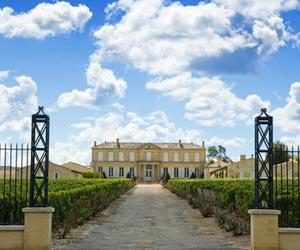 While Bordeaux is well regarded for wines produced within specific areas, many of its wines fall under other, far less ambitious appellations. These include AOC Bordeaux, Bordeaux Supérieur and the sparkling-specific Crémant de Bordeaux. The Bordeaux Rouge appellation accounts for more than one-third of all production.
While Bordeaux is well regarded for wines produced within specific areas, many of its wines fall under other, far less ambitious appellations. These include AOC Bordeaux, Bordeaux Supérieur and the sparkling-specific Crémant de Bordeaux. The Bordeaux Rouge appellation accounts for more than one-third of all production.
The official Bordeaux viticultural region stretches for 80 miles (130km) inland from the Atlantic coast. It is home to more than 10,000 producers who turn out a vast quantity of wine each vintage. Total production in 2016, according to official figures, was 577.2 million liters.
This output ranges from inexpensive everyday wines through to some of the world’s most expensive and prestigious labels. Bottles of dry red wine produced under the region’s generic Bordeaux appellation can be bought for just a few dollars. Those from the top châteaux are regularly traded for several thousand dollars. Auction figures and retail prices do not always conform with Bordeaux’s distinct and historically significant classification system, which has remained largely unchanged since the middle of the 19th Century.
Bordeaux’s climate is moderated by its proximity to the Atlantic Ocean and the presence of the various rivers (the Dordogne, the Garonne and the Gironde Estuary into which they flow). The region takes its name (which translates roughly as “next to the waters”) from the port city of Bordeaux, which serves as its logistical and administrative center. The vast expanse of pine forest to the south (La Foret des Landes) protects Bordeaux from strong, salt-bearing winds coming off the Atlantic Ocean, although there is a risk of still winter air getting trapped and bringing frost to the Bordelais vineyards.
With a latitude (45°N) exactly halfway between the equator and the North Pole, summer daytime temperatures hover around 77F (25C), and rarely rise above 86F (30C), while winter temperatures only occasionally dip below freezing. The Médoc peninsula feels the maritime influence particularly strongly; local winemakers talk of the gentle breezes and light clouds that take the edge off even the hottest summer days.
The region’s long, relatively warm summers are ideal for growing late-ripening grape varieties. That is not to say that cool, wet weather in spring and autumn is not a concern here. A fundamental reason that most Bordeaux reds are made from a blend of Merlot and Cabernet Sauvignon is that these two varieties bud, flower and ripen at different times and rates, which spreads the risk posed by poor weather conditions at flowering or harvest. In years when the autumn is wet, the Cabernet Sauvignon harvest suffers from rot and dilution, but the earlier-ripening Merlot provides a back-up. When the spring is wet, the Merlot flowers poorly, leaving the Cabernet Sauvignon to take up the responsibility of providing a good harvest.
Merlot is the most planted red wine grape in the vineyards of Bordeaux, accounting for around 65 percent of all vines, followed by Cabernet Sauvignon at 23 percent, and then Cabernet Franc at 10 percent. Petit Verdot, Malbec and Carmenère are also permitted, but only make up around two percent of the red grape total. These three are grapes which have been largely abandoned (the latter almonst entirely) since the 19th Century, as they failed to ripen reliably, though Malbec has a continued role in Saint-Émilion in single-digit percentages as a color enhancer. Climate change and success achieved elesewhere may yet lead to a partial comeback for one or more of them.
Bordeaux’s white wines are generally blends of Semillon (49 percent of plantings) Sauvignon Blanc, (43 percent) and, less often, Muscadelle (6 percent). A little Sauvignon Gris, the only other permitted white variety, is also cultivated. Sauvignon Blanc has seen some uplift in recent years given the success of varietal wines from New Zealand and other regions.
Few regions can rival Bordeaux in terms of its impact on the wine world. The contenders include Burgundy, Champagne, Rioja, Chianti and Napa Valley.
Producer Notes
Esprit de Pavie Bordeaux, France
The wine’s violet color shows youth, freshness and vigor. Its generous aromas display an intense fruitiness, and the first impression in the mouth is of freshness and lively acidity. The fine structure emphasizes finesse over great density and offers mouthwatering tannins on the finish. A tender wine to drink now.
www.vignoblesperse.com

